Speco Technologies SecureGuard SG115 Handleiding
Speco Technologies
Bewakingscamera
SecureGuard SG115
Bekijk gratis de handleiding van Speco Technologies SecureGuard SG115 (2 pagina’s), behorend tot de categorie Bewakingscamera. Deze gids werd als nuttig beoordeeld door 43 mensen en kreeg gemiddeld 4.0 sterren uit 22 reviews. Heb je een vraag over Speco Technologies SecureGuard SG115 of wil je andere gebruikers van dit product iets vragen? Stel een vraag
Pagina 1/2

SecureGuard Server®
About this Quick Setup Guide
Before operating the unit, plesae read this user’s guide thoroughly and
retain it for future reference.
Product Components
Internal Connections continued
Quick Setup Guide (Ver.1.0)
Speco Technologies SecureGuard® Server
Model: SG115
1510-042
The following components are included:
QT: 1
QT: 1
Power Cable
QT: 1
Internal Connections
Front View
1USB 2.0 x2; Microphone Input (Pink); Line Output (Green) (Not shown
in front view image)
Power on the Server
• Please follow the proper power ON procedures to avoid damaging the server.
• Connect all necessary components, e.g. power cable(s), network cable(s), monitor
and cameras, before powering the server.
• Power ON the server by depressing the Power Switch ( ) to boot up the server.
2
Login to Windows
• After boot up, at the Windows login screen, you will see that the default user
account is “Speco Technologies”. There is no password associated with the
default account. It is to set a password after logging into the highly advisable
Windows home screen for the rst time. See Image 1.
Note: The server comes pre-loaded with SecureGuard Server software.®
• At the Windows Desktop home screen, run the SecureGuard®
Conguration Tool to setup the server by double clicking on
the SecureGuard® Conguration Tool icon. See Image 2.
Image 2
• If prompted to select or create a System Recordings folder, point to the storage
drive where the recordings will be stored. Otherwise, move on to the next step.
See Image 3.
Note: DO NOT store recordings on the hard drive dedicated for the operating
system.
Run SecureGuard® Conguration Tool
Rear View
1
2
3
456
7 8
9
10
11
2Power Switch
3PS/2 Ports: Mouse (Green); Keyboard (Purple)
4VGA Output
5HDMI Output
6USB 3.0
7USB 2.0 x4
8Microphone Input (Pink); Line Output (Green); Line Input (Blue)
9Gigabit Ethernet LAN port
10 115 or 230 VAC Input Switch
11 AC Input
Image 3
Quick Setup Guide
Image 1
WARNING: Please store your password
in a safe location. Speco Technologies will
not be able to assist you in recovering a
lost password.
Note: The default timezone on the servers is set
to (UTC-05:00) Eastern Time (US & Canada).
Rev. 10/19/15
Run SecureGuard® Conguration Tool continued
• When prompted, enter the
default username admin
and default password
to access the admin
SecureGuard® Conguration
Tool. See Image 4.
• At the “System” tab, ensure
“System Recordings” le
path is pointing to the
storage drives. See Image 5.
Image 4
Image 5
Setting up Network
Note: For servers with Dual Network Interface Cards, it is HIGHLY ADVISABLE
that the camera and the client connection network trafc be kept seperate.
• In the “Network” tab, for
“Client Interface” select the
network adapter that remote
client(s) will connect to.
For “Video Interface” select
the network adapter that the
camera(s) will connect to.
See Image 6.
Adding Sites (IP cameras, DVRs, NVRs)
Image 6
• To register the server with Speco’s Free DDNS, ensure the “Enable Speco DDNS”
checkbox is selected, and enter a name for the server in the “Host Name” eld
then click on “Submit/Update”. See Image 7.
Image 7
• If the server name isn’t currently
registered with Speco’s DDNS
server, then the registration will be
successful. If it fails, use a different
name for the “Host Name”. See
Image 8.
Image 8
• By default, the server uses ports for network communication.7312 7313&
Note: To avoid network conicts with devices that also use the server default ports
7312 7313 and , the option of changing the port numbers is available through the
Conguration Tool. The servers come shipped with an inbound rule for Window’s
rewall that allows for communication on the server’s default ports. If the server’s
default ports are changed, please ensure the existing inbound rule is updated, or
create a new inbound rule permitting communication on the new port values.
• The “Sites” tab is where sites (IP cameras, DVRs, and NVRs) can be added,
deleted or updated. There are two methods of adding sites to the server. The rst
method Site Locate uses “ ” which automatically scans the Local Area Network
for only IP cameras. See Image 9.
Method 1: Auto Detect
Method 2: Manual
→
→
Image 9
• Clicking on “Site Locate”,
will open the “Site Locate”
window and start scanning
the local area network for
IP cameras. You can rescan
the network by clicking on
“Refresh”. See Image 10.
Image 10
• To add an IP camera to the server, double
click on the IP camera to bring up the “Site
Settings” windows for the IP camera.
Ensure the values for all the elds are
accurate and then click “OK”. See
Image 11.
• The IP cameras will now be listed under
“Sites to add” list.
Image 11
• Continue to repeat this process for the remaining IP cameras that must be added
to the server. Once complete, click on “OK” to exit the “Site Locate” window. The
cameras that were added to the “Sites to add” list will now be made available in
the “Sites” tab. Click on “Apply” to complete adding the sites to the server. See
Image 14.
Image 12
• The second method of adding sites to
the server is by manually entering the site
information. This method be used must
when adding and DVRs NVRs. To enter
site information manually, click on “New”
in the “Sites” tab to bring up the “Site
Settings” window. See Image 12.
• Fill in the values for all the elds, and
verify the accuracy of the information by
clicking on “ ”. The server will Check Site
run a quick test to conrm if the
connection to the site is successful. If
successful, click on “OK” to exit the “Site
Settings” window. See Image 13.
Image 13

Quick Setup Guide (Ver.1.0)
Speco Technologies SecureGuard® Server Model: SG115
Adding Sites (IP cameras, DVRs, NVRs) continued Installing SecureGuard on Client PCs ®continued
Adding Users continued
200 New Highway
Amityville, NY 11701
1-800-645-5516
www.specotech.com
Speco Technologies is constantly developing and improving products.
We reserve the right to modify product design and specications without
notice and without incurring any obligation. Rev. 10/19/15
• Finally, click on “Apply” to add the site(s) to the server. See Image 14.
Image 14
• To set up a recording schedule, click on the “Schedules” tab.
• Next to “Action:” select the type of recording (Continuous, Motion, or Sensor)
by clicking on the button (radio button) next to it.
• The schedule grid is made up of rows and columns. The rows pertain to the
days of the week (Mon-Sun), and the columns pertain to the hours of a day
(00HR-23HR).
• The cells inside the schedule grid can be colored in based on the type of
recording selected. The color representation is as follows: Green for
, for , for , and for Continuous Blue Motion Orange Sensor White No
Recording. To color in the grid, hold down the mouse button and drag the
mouse cursor over the grid. See Image 15.
Green
Blue Orange White
Image 15
• To set the entire schedule to
a single recording type,
click on the white box
located in the top-left most
corner of the grid. See
Image 16.
Image 16
• Once the schedule and recording type has been set, associate the schedule with
individual sites (IP cameras, DVRs, NVRs) by moving over the sites listed under
“Available Site…” to “Sites using schedule …” by clicking on .
• Click on “Apply” to save the schedule.
Adding Users
Note: By default, the server
comes loaded with 3 user
accounts: Admin, User, &
Guest.
• Go to the “Users” tab, here
you can add, edit, or delete
users, and manage user access
control through roles and
permission.
• To add users, click on “Add
User”. See Image 17. Image 17
• The “Add User” window will pop up.
See Image 18.
Image 18
• Enter the new user credentials, and select a “User Role” based on the level of access
you wish the user to have. An “Administrator” role has full access to the system and
the permissions associated with this role cannot be modied. The “User” and
“Guest” roles have limited access, but the permissions can be modied. See Image 19.
Note: A customized role can be created to meet varying levels of access control.
Image 19
• The name and email eld are not
mandatory.
• Click on “OK” to exit the “Add User”
window, and click on “Apply” in the
“Users” tab to add the user(s) to the
system.
Installing SecureGuard on Client PCs®
Note: Download SecureGuard® Client from Speco Technologies website at
www.specotech.com.
• Once the client software has been obtained, start the installation by running the
executable le.
• Uncheck the components you don’t wish to install on the client computer.
This option is limited to the following components:
• SecureGuard® Player
• Start Menu Shortcuts
• Desktop Icon
Components deemed necessary for the operation of SecureGuard Client cannot ®
be unchecked. Click on “Next” to proceed. See Image 20.
Image 20
• Select the destination folder where SecureGuard Client will be installed by ®
clicking on “Browse”, or use the suggested destination folder which SecureGuard ®
Client will create. Click on “Install” to proceed. See . Image 21
Startup & Live View continued
Image 21
• The installer will attempt to install
Microsoft Visual C++ 2010 x86
Redistributable. Check that you have
read and accepted the license terms and
then click on “Install”. See Image 22.
• Once the installation is complete, click on
“Finish” to end the process. See Image 23.
Image 22
Image 23
Startup & Live View
Setting up Recording Schedules
• Once the installation is complete, the SecureGuard Client user login window will ®
open. If not, run the application by double clicking on the SecureGuard Client ®
desktop icon.
• At the user login window, enter the server address. The server address can be the
IP address of the server or the DDNS name. If using the latter, please make sure
“Use DDNS” checkbox is checked and then click on “OK”. See Image 24.
Drop-down contains
previously entered
Server Addresses.
→
Check the box to
connect to server using
DDNS name
→
Enter the Server
Address (DDNS or IP
address) here.
→
Enter username for
Login ID.
→
Enter password
associated with the
username.
→
Image 24
• Once logged in, the SecureGuard Client ®
Welcome window will pop up. Click
“OK” to proceed. See .Image 25
Image 25
• Next, the User Settings window will pop up. Here the sites that were added to the
server will be listed under Saved Sites. See .Image 26
Image 26
• In order to view the sites, they need to be placed in a group. To start off, a default
group has already been created named . To add sites to the , click Group Group
on the . After adding the sites, click on “Apply”. The “Apply” button will be
grayed out, indicating the sites have been added to the . Click on “Close” to Group
exit the User Settings window. See .Image 27
Image 29
Image 27
• The Open Group window will pop up listing
all the groups and sites. Select and Group
click on “OK” to begin viewing the sites
added to . See and .Group Image 28 Image 29
Image 28
Product specificaties
| Merk: | Speco Technologies |
| Categorie: | Bewakingscamera |
| Model: | SecureGuard SG115 |
Heb je hulp nodig?
Als je hulp nodig hebt met Speco Technologies SecureGuard SG115 stel dan hieronder een vraag en andere gebruikers zullen je antwoorden
Handleiding Bewakingscamera Speco Technologies
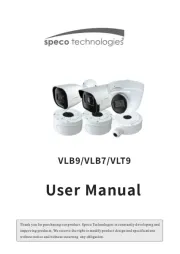
11 Maart 2025
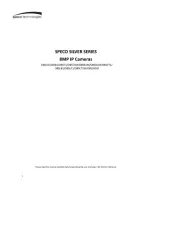
11 Maart 2025

27 Mei 2024

6 Juli 2023

1 Juli 2023

30 Juni 2023

27 Juni 2023

26 Juni 2023

25 Juni 2023
Handleiding Bewakingscamera
- Samsung
- SPC
- Pioneer
- Tracer
- Conbrov
- Tellur
- Rostra
- Avidsen
- Owltron
- 7Links
- Axis
- Clas Ohlson
- Vosker
- EtiamPro
- Exacq
Nieuwste handleidingen voor Bewakingscamera
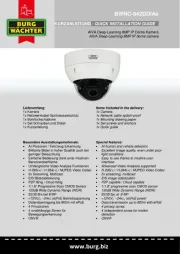
3 Augustus 2025
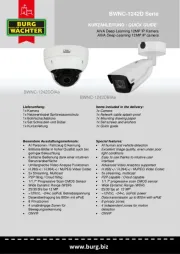
3 Augustus 2025
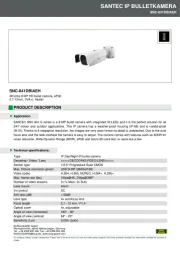
2 Augustus 2025
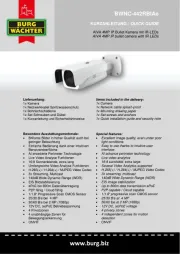
2 Augustus 2025
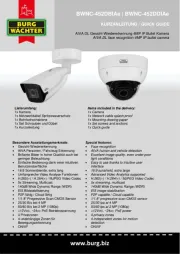
2 Augustus 2025
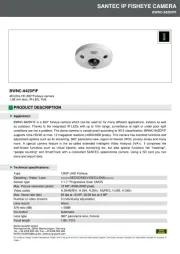
2 Augustus 2025
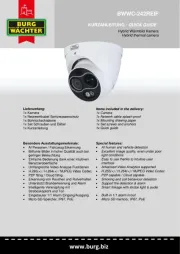
2 Augustus 2025
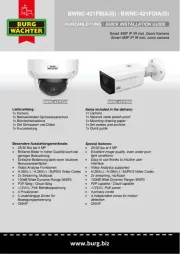
2 Augustus 2025
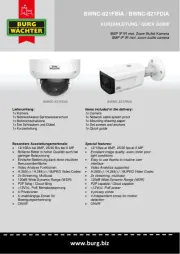
2 Augustus 2025
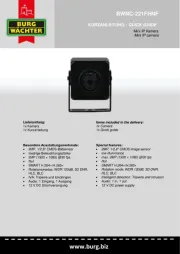
2 Augustus 2025
